This story originally ran in the Heavy Table Tap newsletter for August 18, 2023. To get the Heavy Table newsletter 4x a month (or 6x, including the Tap), back us on Patreon.
A great croissant is an edible work of art, even if eating it is sort of a wild and silly thing. Yes, you inhale it; yes, it’s the embodiment of butter and bread made into something crispy and delicate and elegant and intoxicating all at once; yes, enjoying it is instinctual.
But this classic pastry is the result of a great deal of calculation. Everything from the type of butter to the brand of flour to the use of temperature (the heat of the oven; the cool of the fridge or freezer) to the painstaking or simplistic method of lamination and rollout goes into creating a final product that is somewhere between profoundly mesmerizing and deeply disappointing.
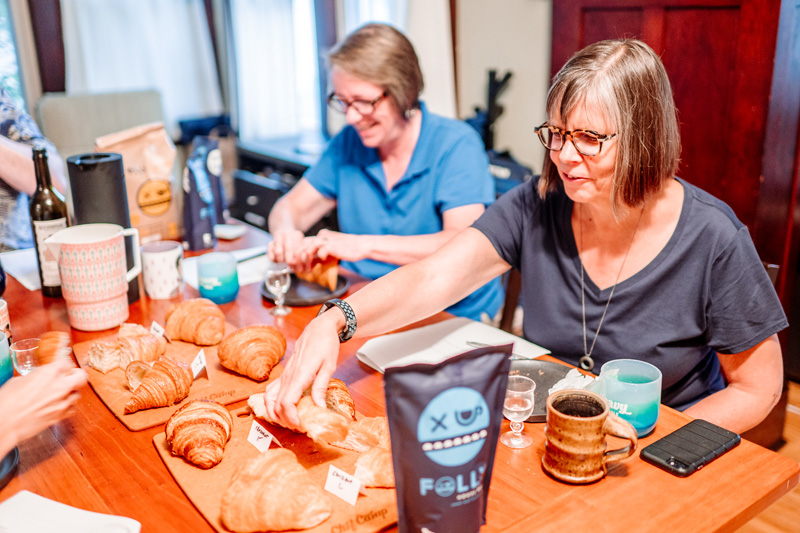
Most commercially available croissants in the United States represent some sort of compromise between affordable ingredients, reasonable amounts of labor, and shelf stability, with excellence typically being compromised or betrayed in the process of making a cheaper, more durable pastry.
After tasting our way through 19 local croissants, the results of that compromise were clear: we found only one croissant we’d describe as great, several that were good, many that were serviceable, and a handful that we can’t really recommend.
OUR METHODOLOGY
We bought two plain butter croissants at nineteen different shops across the Minneapolis-St. Paul metro area, shooting for spots that make their own pastry on site and have a reputation for excellence and/or croissants specifically. We bought our croissants in the morning and tried them in the early evening. Nothing was held overnight.
Our four-person team of judges (huge thanks here to Stacy Brooks, Becca Dilley, Jeanne Lakso, and Amy Rea) tasted their croissants blind, identified only by letters. They had one of each sort of croissant to eat, and another to look at and pick up in order to judge physical appearance.
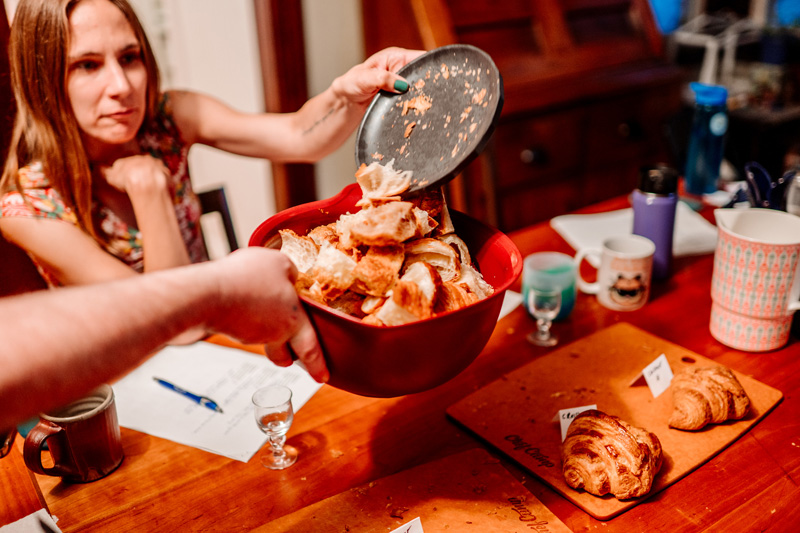
Croissants were evaluated on a 50 point scale. 20 points were available for texture, with an emphasis on a crispy/flaky exterior and a chewy/evenly risen interior, 20 points were available for flavor (with an eye toward buttery richness without much of a greasy or heavy character), and 10 points were available for appearance and miscellaneous observations.
Only one croissant (our winner) managed to score more than 40 points after scores were averaged out; only two dipped below 20.
We noted all of the croissants’ weights and prices (see our appendix for details), and we also determined the price per gram for each pastry.
Croissant prices varied from $3-5, with a fair amount of variation within that range. But the most expensive croissants weren’t always the worst value; Rustica’s $5 croissant was 105 grams, and Marc Heu’s $5 croissant was 120 grams, giving them a cost per gram of 4.8 cents and 4.2 cents each, respectively. Solomon’s featherweight $3 croissant clocked in at 5 cents a gram.
A BRIEF NOTE ON COFFEE

A tip of the hat to Folly Coffee for supporting our absurdly ambitious croissant-tasting endeavors – they hooked us up with a monster-sized bag of Classic Jo to get us through the night and sent our hard-working judges home with bags of the House Bean.
TOP OF THE HEAP
Our three runners-up were Rustica (an average of 35 points out of 50), Honey and Rye (36.5) and Sun Street (37.5)
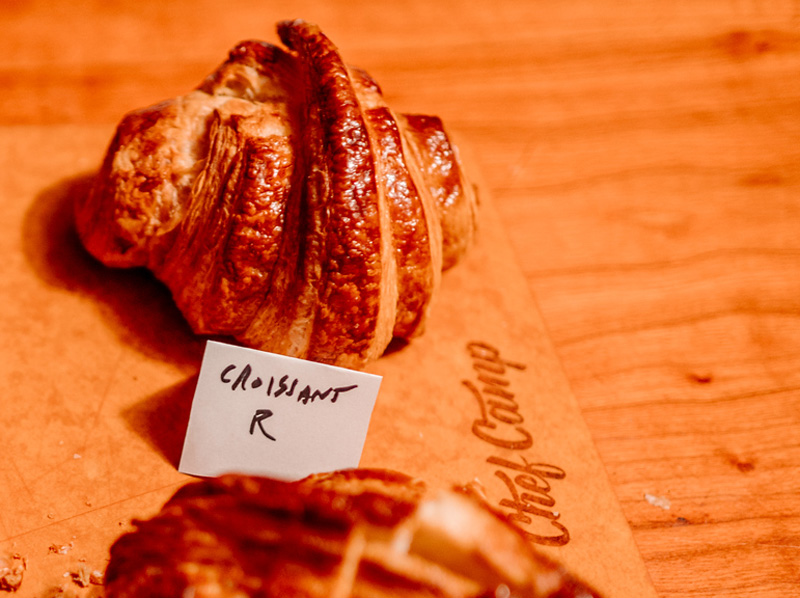
Tasters liked Rustica for its “nice crispness and great layers” and “great texture and crumb.”
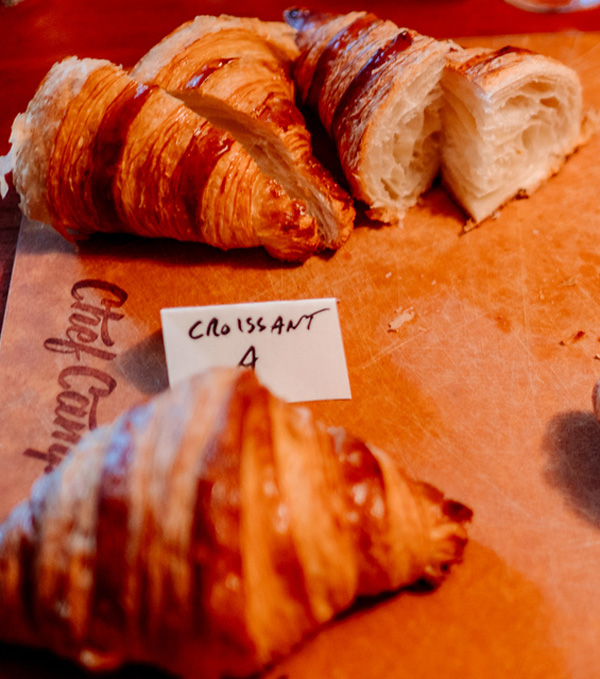
Honey and Rye scored for its “lovely appearance” and “great shine,” and its “airy but satisfying” flavor.

And Sun Street was praised for being “pretzel-like in a tasty way,” the contrast between its “interior softness and exterior crunch,” and its “great smell and buttery, pretzel-like” quality.
The hero of the group, and the best of the 19 croissants we tasted blind?
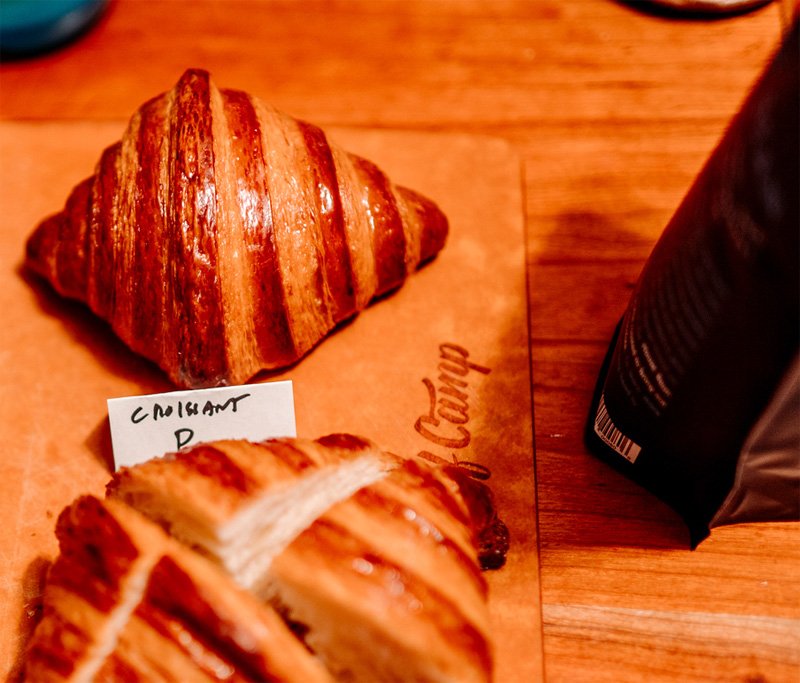
New-school wunderkind Marc Heu. With an average score of 41.25, judges noted that it looked “lovely,” was suitable for a “special occasion,” with “nice layers and height.” Its sweet, buttery character was noted, and one judge exclaimed: “Now this is a croissant!”
For whatever it’s worth, Marc Heu was also the heaviest croissant of the bunch, weighing in at a whopping 120 grams, more than double that of our lightest croissant (A Baker’s Wife, at 55 grams.)
MIDDLE OF THE PACK
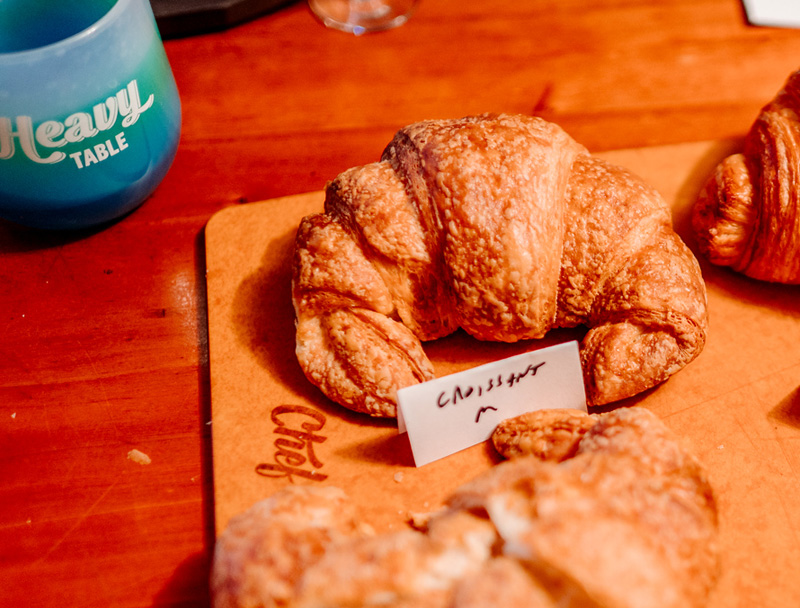
May Day Cafe just missed the cutoff for Top of the Heap with an average score of 33. Tasters liked its “sturdy” exterior and “good crunch” with one noting “probably not how a croissant is supposed to taste, but I really like it!”
And May Day wins our prize for best value by a crushing margin – at $3 for a 108 gram pastry, it averaged a mere 2.8 cents per gram, less than half as much as the most expensive (A Baker’s Wife, at 6.4 cents) and much less even than the second cheapest croissants we bought (Marc Heu and Lunds tied at 4.2 cents a gram.)
Alma Cafe scored a solid 32 with its “nice crispy exterior” and “good layers,” and won praise for its “butteriness,” even if one taster wished it could have been more evenly baked.
Solomon’s Bread racked up a respectable 32 point average – it was a “little overbaked” but had a “good interior texture” and was praised as a “good solid croissant.”
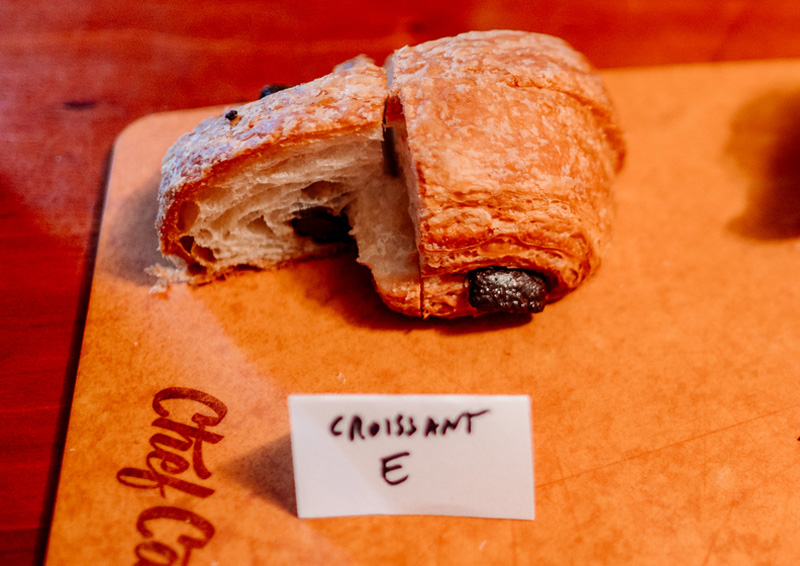
Vikings and Goddesses pulled 31.75 points, with judges liking it “solid buttery flavor” and “really nice crispness.” “Good chew” and “nice browning” won this one some additional praise. (We ended up with a chocolate croissant, but disregarded the chocolate for the purpose of scoring.)
Turtle Bread – a place we’ve sometimes overlooked in the past – clocked in with 28 points, with judges liking the croissant’s “light and airy” texture, while wanting “a bit more flavor.”
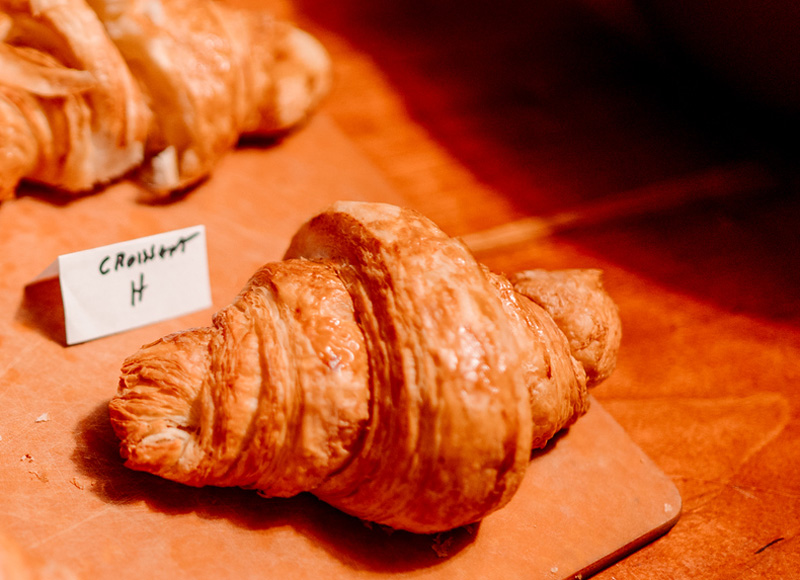
We were surprised that Black Walnut, a luxury name in local bakeries if such a thing exists, only managed 27.5 points. But tasters called it “pretty average,” “good for sandwiches” and “too spongy” while enjoying its “more buttery” than usual flavor.
The fairly newly opened Mother Dough scored 27 points for its croissant which suffered from a “not very crisp exterior” while winning points for its “nice buttery flavor.”

Bellecour pulled 26.25 points. Judges liked its “nice glossy appearance” and “decent layers” but wished it was more crisp. A mild, spice-like flavor was more of a distraction than a benefit.
The Lunds croissant managed 24 points, pretty impressive for a grocery store offering. Judges found it “a little dry” with “not much flavor” but liked its layers and crispness. One noted: “Fine if it’s cheap!” which it was – at 4.2 cents a gram, it was among the cheapeast we bought.
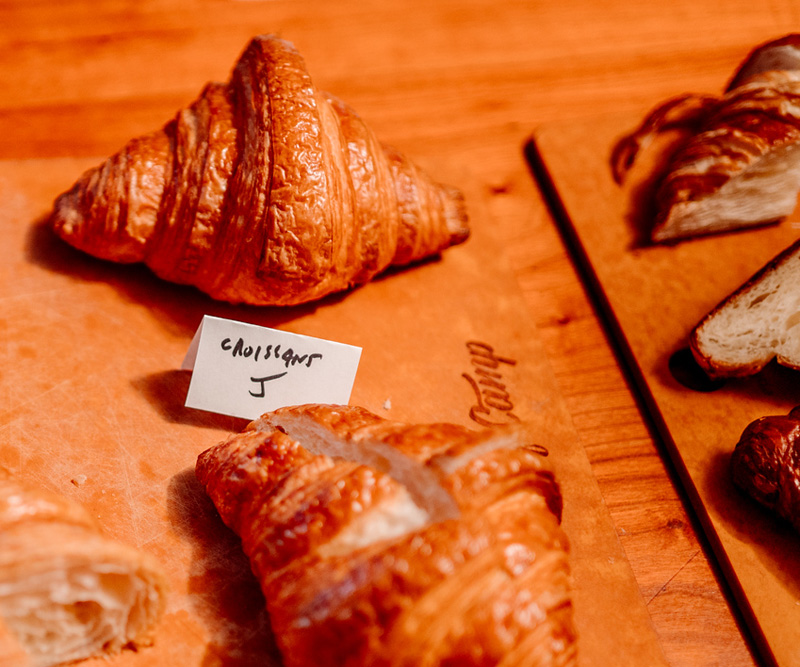
One-time local croissant powerhouse Patisserie 46 squeaked out a meager 22.75 points, surprising our judges, who thought it was too airy, “tasted artificial” and had “not much flavor.” The croissant’s elegant appearance worked in its favor, though, even if judges ultimately thought it “looked better than it was.”
La Boulangerie Marguerite, at 21.75, just managed to dodge being at the bottom the barrel, slated for being “too chewy,” and tasting not like a croissant, but “more like bread.”
BOTTOM OF THE BARREL
Our four least favorite croissants were Mi-Sant (21.25), Laune Bread (21), and Trung Nam (18), with A Baker’s Wife defining the floor of croissant quality at a miserable 13.75 points.
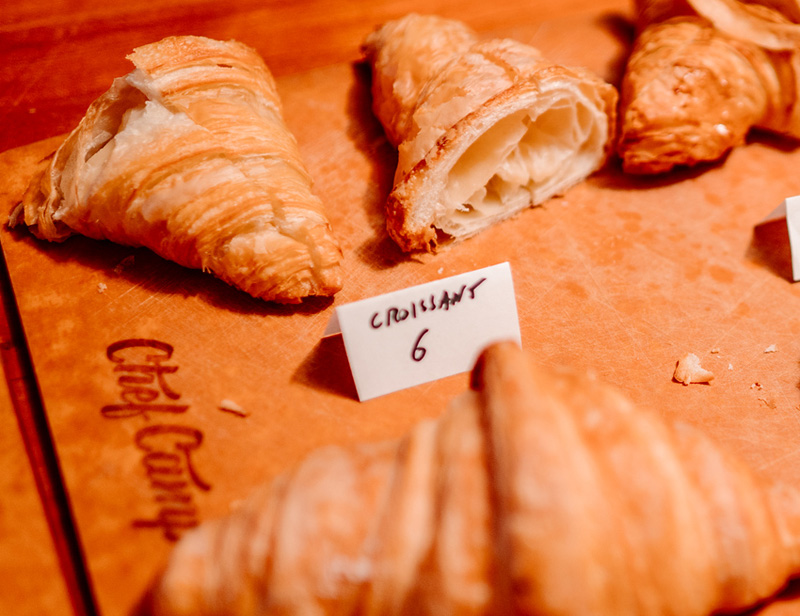
The first three croissants were all complicated cases; A Baker’s Wife was just plain lousy, with judges noting the croissant’s “doughy” and “Play-Doh-like” interior and a “greasy, unpleasant flavor.”
“Artificial” and “mushy” are two additional adjectives that sprang to mind for judges. Icing on the cake: A Baker’s Wife was also the most expensive croissant we bought on a gram-by-gram basis.
Mi-Sant (“the greasiness is off-putting”) and Trung Nam (“like they sprayed it with Pam, angry at this one”) both represent Vietnamese-style croissants, made for a different climate than the French standard, and we can say with confidence from past experience that Mi-Sant’s coconut croissant is one of the tastiest filled pastries in the metro.

And Laune Bread‘s admirable dedication to whole grains cost it points – every taster noted the whole grain and expressed a dislike for the sour, substantial flavor it imparted. Laune’s a great bakery; its croissant is an acquired taste we haven’t yet acquired.
APPENDIX – WEIGHTS AND PRICES
A Baker’s Wife, $3.50 for 55 grams (6.4 cents a gram)
Alma Cafe, $4.50 for 78 grams (5.8 cents a gram)
Bellecour, $4.50 for 97 grams (4.6 cents/gram)
Black Walnut, $4 for 82 grams (4.9 cents/gram)
Honey and Rye, $3.75 for 64 grams (5.8 cents/gram)
La Boulangerie Marguerite, $4 for 91 grams (4.4 cents/gram)
Laune Bread, $4 for 74 grams (5.4 cents/gram)
Lunds, $3 for 72 grams (4.2 cents/gram)
Marc Heu, $5 for 120 grams (4.2 cents/gram)
May Day Cafe, $3 for 108 grams (2.8 cents/gram)
Mi-Sant, $3.50 for 67 grams (5.2 cents/gram)
Mother Dough, $4.50 for 77 grams (5.8 cents/gram)
Patisserie 46, $4.25 for 67 grams (6.3 cents/gram)
Rustica, $5 for 105 grams (4.8 cents/gram)
Solomon’s Bread, $3 for 60 grams (5 cents/gram)
Sun Street, $4 for 78 grams (5.1 cents/gram)
Trung Nam, $4 for 75 grams (5.3 cents/gram)
Turtle Bread, $3.50 for 75 grams (4.7 cents/gram)
Vikings and Goddesses, $5 for 79 grams (6.3 cents/gram)

